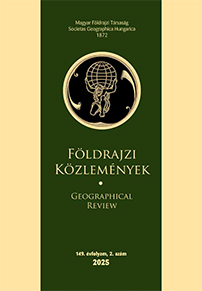BRIT KÖZÉP-EURÓPA TÉRKÉPEK, 1915–1919. II. RÉSZ A KÉZIKÖNYV ÉS ATLASZ SZERZŐJE: B. C. WALLIS
Absztrakt
This article is the second part of a paper which examines The Peoples of Austria-Hungary I geographical handbook and the accompanying Atlas of Austria-Hungary, published by Britain’s Naval Intelligence Division in 1919, its making and contents, and the involvement of Hungarian and British geographers in mapping and boundary making. The article shows that B. C. Wallis undertook to study Hungary’s nationalities and demography from 1915 as part of the 1:1M mapping project coordinated by Arthur Hinks in the Royal Geographical Society in London on behalf of the Geographical Section, General Staff and, later, for the Geographical Section (ID32) of the Naval Intelligence Division. Wallis was known in academic circles for his book on the teaching of geography and work in statistics, but he was not an expert on Hungary, and he joined the project to boost his scholarly career. In comparison with those Hungarian geographers involved in the peace preparations and who used that work to start their career, Wallis failed to establish himself as an academic geographer after the First World War. Britain won both the War and the peace, yet British geographers rued the missed opportunity to strengthen geography as a discipline in the immediate post-war period. Hungary lost the war and the peace, yet geography in Hungary was seen as a strategic discipline that could help the country both know itself and achieve the revision of the peace treaty.
Copyright (c) 2025 Róbert Győri, Charles W. J. Withers

This work is licensed under a Creative Commons Attribution-NonCommercial-NoDerivatives 4.0 International License.



